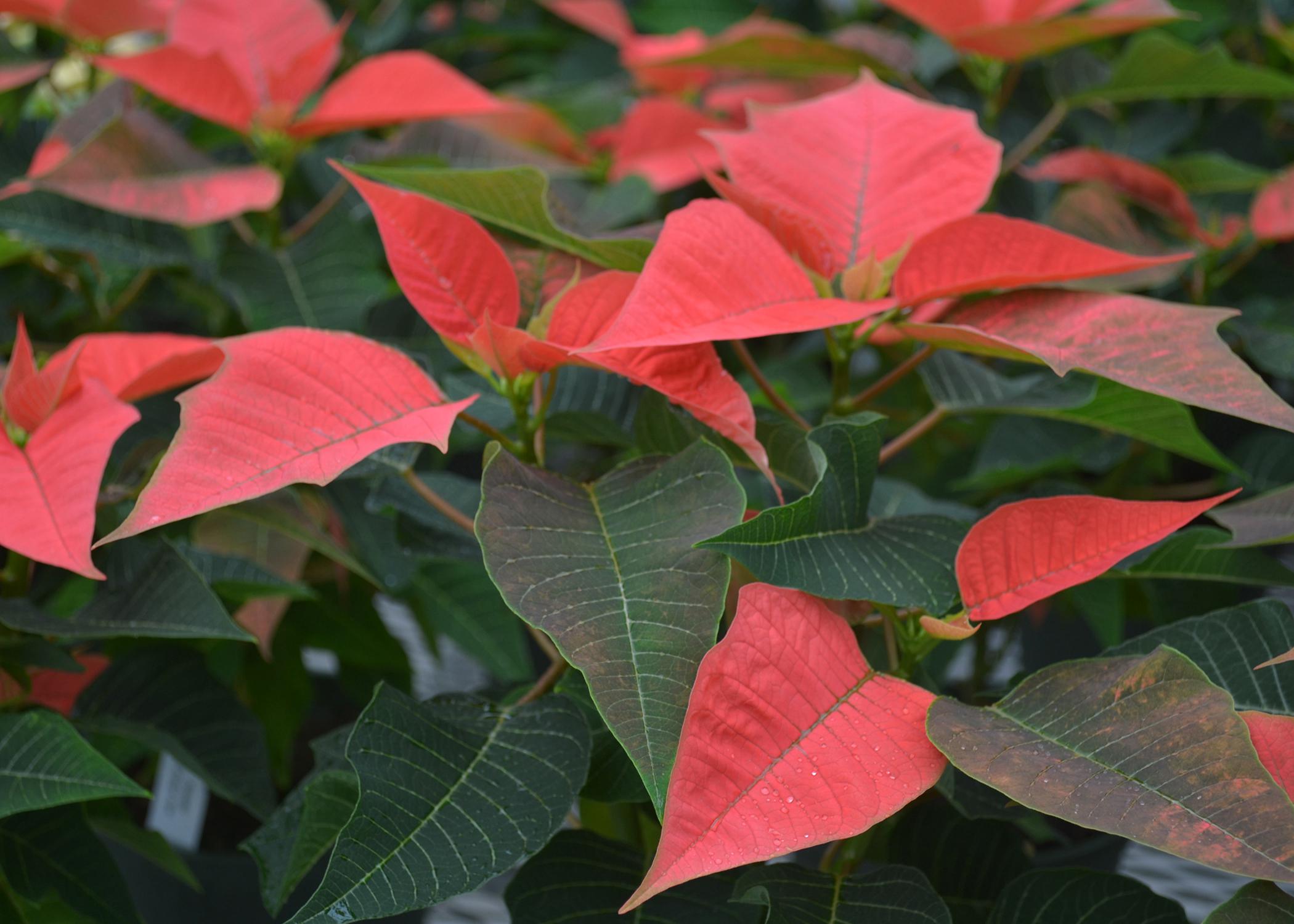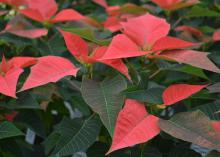Year-round care lets poinsettias rebloom
While many people think of poinsettias as short-lived holiday decor, with proper care, these beautiful plants can thrive long after the holidays and even bloom again the following year.
This is great news for me, as poinsettias have always been one of my favorite holiday plants. The process takes a little extra attention, but the results are rewarding.
Once the holiday season ends, I begin by placing my poinsettias in a bright spot where they can get plenty of indirect sunlight. I’m careful to shield them from direct sunlight which is harsh and may cause the colorful bracts to fade or dry out.
Ideally, poinsettias like temperatures between 65 and 70 degrees during the day, with nighttime temperatures dipping slightly to around 60 to 65 degrees. I try to keep them in a room where the temperature remains consistent. Avoid any cold drafts from windows, doors or vents, as sudden changes can stress the plants.
Watering is another key factor in keeping poinsettias healthy.
I make it a habit to check the soil regularly and water only when the top 1 to 2 inches feel dry to the touch. Overwatering is one of the most common problems with poinsettias, and it can quickly lead to root rot. I always ensure the pot has adequate drainage holes.
When watering, let the water run through the soil and drain out the bottom, but never allow the pot to sit in standing water. I also water at the base of the plant to avoid splashing the leaves or bracts, as excess moisture on the foliage can lead to fungal issues.
Poinsettias enjoy moderate humidity, and most homes offer just enough for them to grow well. However, during the winter months, indoor heating can make the air too dry.
If your house is very dry in the winter, occasionally mist around the plants with a spray bottle or place the pots on a pebble tray filled with water. Make sure the pots themselves don’t sit directly in the water. These tactics create a more humid microclimate around the plants.
Once the bloom season ends in late winter or early spring, I trim the poinsettias back to about 6 inches above the soil. While it may seem drastic, this is essential to encourage new growth and prevent the plants from becoming leggy. Remove any damaged leaves to keep the plant looking tidy.
At this stage, I begin fertilizing the poinsettias to provide them with the nutrients they need for healthy growth.
I use a balanced, water-soluble fertilizer diluted to half strength and apply it every 4 to 6 weeks. Avoid fertilizing while the plant is still in bloom, as they don’t need extra nutrients during that period.
When outdoor temperatures remain consistently above 60 degrees, I move my poinsettias outside for the summer months.
To help them adjust gradually to outdoor conditions, I harden them off over a period of 7 to 10 days. I start by placing the plants in a sheltered area with partial shade for a few hours each day, then slowly increase their exposure to sunlight.
Once acclimated, I choose a location where my poinsettias receive bright, indirect light or morning sun with afternoon shade to protect their leaves from the intense midday heat.
If I want my poinsettias to bloom again for the next holiday season, I follow a strict light and darkness schedule starting in early October.
For about 6 to 8 weeks, I ensure the plants receive 12 to 14 hours of complete darkness each night. I usually place them in a closet or dark room, but you can also cover them with a lightproof box.
By late November or early December, the bracts begin to change color, signaling the start of another blooming season. It’s always a joy to see the poinsettias burst back into life, their colorful bracts making the house feel festive all over again.
With a little care, patience and attention to detail, I’ve been able to enjoy my poinsettias year after year, and you can, too.





